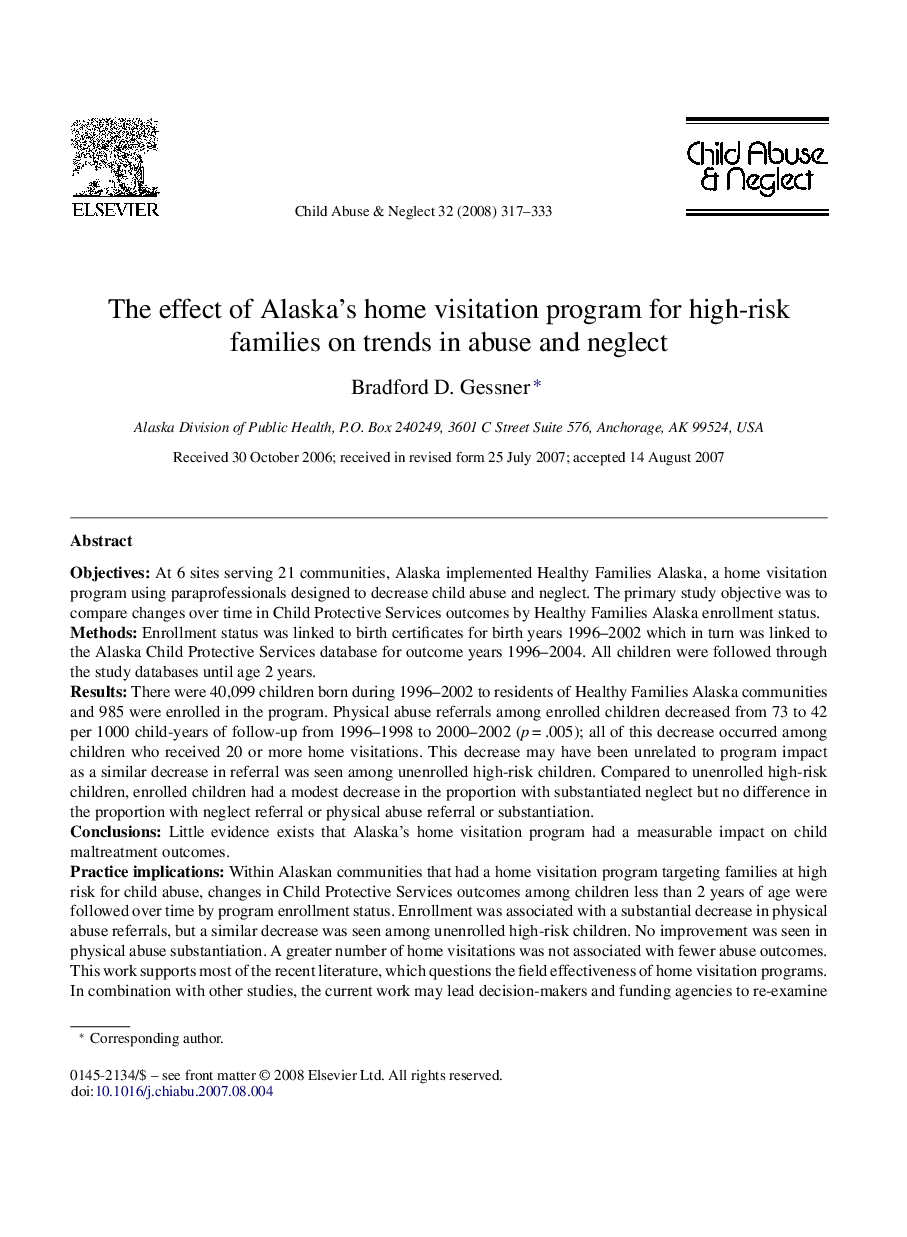| Article ID | Journal | Published Year | Pages | File Type |
|---|---|---|---|---|
| 345397 | Child Abuse & Neglect | 2008 | 17 Pages |
ObjectivesAt 6 sites serving 21 communities, Alaska implemented Healthy Families Alaska, a home visitation program using paraprofessionals designed to decrease child abuse and neglect. The primary study objective was to compare changes over time in Child Protective Services outcomes by Healthy Families Alaska enrollment status.MethodsEnrollment status was linked to birth certificates for birth years 1996–2002 which in turn was linked to the Alaska Child Protective Services database for outcome years 1996–2004. All children were followed through the study databases until age 2 years.ResultsThere were 40,099 children born during 1996–2002 to residents of Healthy Families Alaska communities and 985 were enrolled in the program. Physical abuse referrals among enrolled children decreased from 73 to 42 per 1000 child-years of follow-up from 1996–1998 to 2000–2002 (p = .005); all of this decrease occurred among children who received 20 or more home visitations. This decrease may have been unrelated to program impact as a similar decrease in referral was seen among unenrolled high-risk children. Compared to unenrolled high-risk children, enrolled children had a modest decrease in the proportion with substantiated neglect but no difference in the proportion with neglect referral or physical abuse referral or substantiation.ConclusionsLittle evidence exists that Alaska's home visitation program had a measurable impact on child maltreatment outcomes.Practice implicationsWithin Alaskan communities that had a home visitation program targeting families at high risk for child abuse, changes in Child Protective Services outcomes among children less than 2 years of age were followed over time by program enrollment status. Enrollment was associated with a substantial decrease in physical abuse referrals, but a similar decrease was seen among unenrolled high-risk children. No improvement was seen in physical abuse substantiation. A greater number of home visitations was not associated with fewer abuse outcomes. This work supports most of the recent literature, which questions the field effectiveness of home visitation programs. In combination with other studies, the current work may lead decision-makers and funding agencies to re-examine the usefulness of home visitation programs, particularly those using a methodology similar to that implemented in Alaska.
